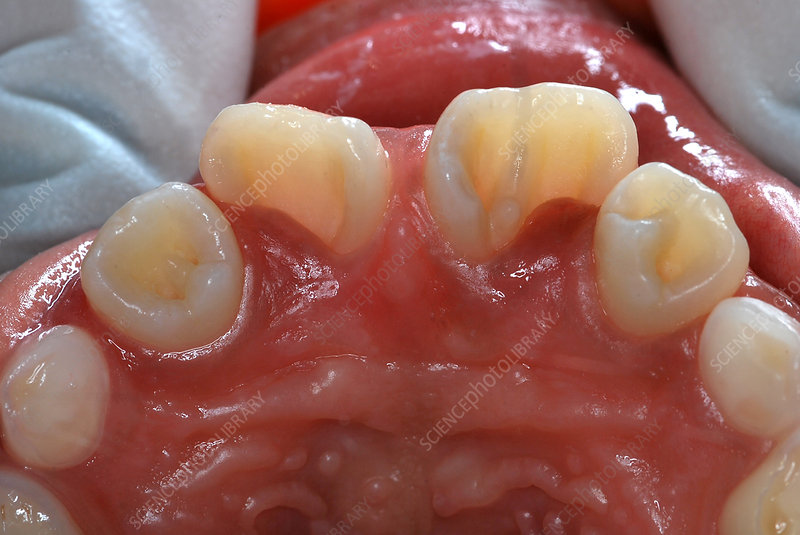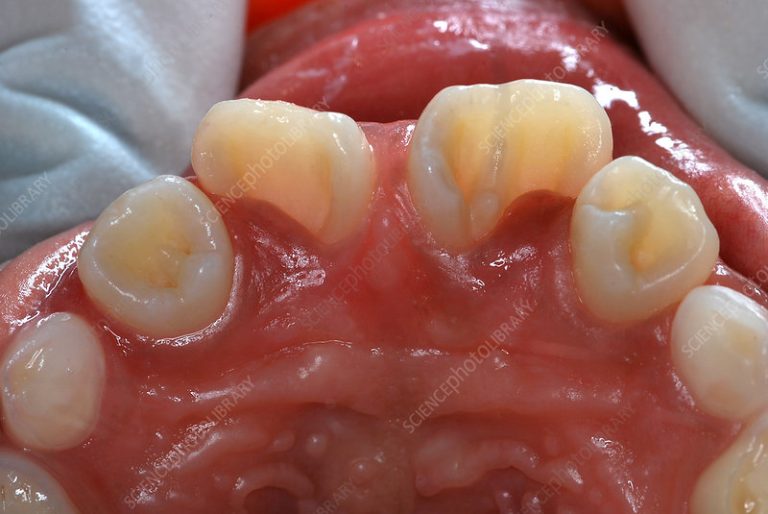
- November 6, 2023
- 7989 Views
The 12 Strangest Dental Cases and Dental Oddities In History
The human mouth is a landscape rich in biological diversity and
complexity. While most dental practitioners are well-versed in routine
oral health issues, there exists a fringesphere of dental phenomena so
rare and unusual that they challenge the boundaries of what we
understand about teeth and gums. Herein, we explore twelve of the most
enigmatic dental oddities, each a window into the remarkable
adaptability and mystery of the human body.
1. Hyperdontia: The Case of Extra Teeth
Hyperdontia is the condition of having supernumerary
teeth, or teeth that appear in addition to the regular number of teeth.
They can occur in any area of the dental arch and can disrupt the
alignment and integrity of one’s bite.
The Mysterious Shark Boy
One of the most baffling cases was that of a young boy in India,
often referred to as “Shark Boy,” who reportedly had over 232 teeth
extracted. What made his condition remarkable was the sheer number of
extra teeth, a highly unusual manifestation of hyperdontia, and the fact
that his remaining teeth appeared surprisingly normal after the
extraction.
The Theoretical Causes
While the exact cause of hyperdontia is not known, it’s believed to
be a mix of genetic and environmental factors. Some theories suggest a
link to an evolutionary throwback, pointing to our shark ancestors that
had rows of teeth. However, in “Shark Boy’s” case, this evolutionary
explanation falls short, pointing instead to a potential mutation.

2. Dens in Dente: The Tooth Within a Tooth
Dens in Dente, also known as “dens invaginatus,” presents as a tooth that has another tooth growing inside it. This creates a sort of dental Russian doll, with layers of enamel and dentin enclosed within each other.
The Lithuanian Discovery
A well-documented case from Lithuania revealed a patient with a molar that contained another fully formed tooth inside. Dental X-rays showed a separate pulp chamber and root system encased in the outer tooth’s structure, a phenomenon that perplexed dentists worldwide.
A Developmental Anomaly
This rare condition is thought to result from an invagination in the tooth crown or root that occurs during tooth development. However, the exact mechanism that causes this to happen is still a subject of speculation and research.
3. Talon Cusps: The Claw-Shaped Dental Spike
Talon cusps are an anomalous condition where an extra cusp, resembling an eagle’s talon, forms on the back of a tooth. This can lead to oral discomfort and a range of dental complications.
The Eagle-Eyed Incisor
One rare case involved a patient with a pronounced talon cusp on an incisor that was so large it resembled an additional tooth. This unusual growth pattern can lead to aesthetic concerns and bite interference.
The Predator’s Legacy?
There are several theories regarding the emergence of talon cusps, with some researchers proposing a genetic link to our predatory ancestors. Others see it as a random developmental anomaly with no clear evolutionary advantage.
4. Gemination and Fusion: When Teeth Become One
Gemination and fusion are conditions where two teeth develop from a single tooth bud (gemination) or where two separate tooth buds fuse together (fusion). This can result in unusually shaped or oversized teeth that often cause alignment issues.
The Blended Incisor Case
A notable instance was documented where a patient’s two front teeth were fused, creating what appeared to be one large tooth at the center of their smile. The condition was not only visually striking but also led to challenges with oral hygiene and dental procedures.
A Puzzling Developmental Quirk
The phenomenon is considered a developmental anomaly, and while the precise cause is not well-understood, it’s generally not thought to be hereditary. Instead, it’s a sporadic event that occurs during the early stages of tooth development.
5. Regional Odontodysplasia: The Ghost Teeth
Regional odontodysplasia is an extremely rare developmental disorder that affects the formation of the enamel and dentin, giving the teeth a “ghostly” appearance on X-rays due to their marked reduction in radiopacity.
The Case of the Vanishing Teeth
In a peculiar case, a patient presented with teeth so poorly calcified that they seemed to vanish on the dental radiographs. Clinically, the teeth appeared discolored, soft, and were prone to infection due to their defective structure.
An Enigmatic Abnormality
The cause of regional odontodysplasia remains a mystery, with some suggesting localized factors during development, such as vascular issues or local trauma. The condition often necessitates extensive dental work, and in some cases, affected teeth may need to be extracted.
6. Ankylosis of Teeth: The Unmovable Molars
Ankylosis of teeth occurs when a tooth becomes fused directly to the jawbone, without the intervening periodontal ligament that typically allows for slight tooth movement.
The Immovable Tooth
A striking case involved a child whose baby molars became ankylosed, preventing the normal eruption of the underlying permanent teeth. The ankylosed teeth appeared to be submerged compared to the adjacent teeth.
The Underlying Causes
The etiology of ankylosis is not completely understood, but it is often associated with trauma or inflammation. The condition can be difficult to manage, especially in growing children, as it can disrupt the normal eruption pattern and development of the jaw.
7. Amelogenesis Imperfecta: The Enamel-less Teeth
Amelogenesis imperfecta is a genetic condition affecting the development of enamel, resulting in teeth that are discolored, sensitive, and prone to rapid wear and breakage.
The Fragile Smile
An unforgettable instance saw a family where multiple members across generations exhibited varying degrees of enamel hypoplasia, leading to widespread dental fragility and aesthetic concerns.
The Genetic Puzzle
Amelogenesis imperfecta is known to have genetic underpinnings, with several mutations identified that affect enamel formation. Treatment often involves full mouth rehabilitation to restore function and appearance.
8. Dentinogenesis Imperfecta: The Translucent Teeth
Dentinogenesis imperfecta is another genetic disorder that affects the dentin layer of the teeth, resulting in a characteristic translucent or opalescent appearance, with teeth often appearing blue-gray or yellow-brown.
The Case of the Crystal Teeth
In a noted case, a child presented with teeth so translucent that they appeared almost glass-like. The teeth were not only aesthetically affected but also offered little resistance to wear and were susceptible to damage.
The Quest for Understanding
The condition is inherited in an autosomal dominant pattern, and like amelogenesis imperfecta, it necessitates extensive dental care, often with crowns to protect the teeth from early loss and maintain dental function.
9. Taurodontism: The Bull-Like Teeth
Taurodontism is a variation of tooth morphology where the body of the tooth and pulp chamber is enlarged vertically at the expense of the roots, resembling the teeth of extinct bovines known as aurochs.
The Towering Molars
A rare presentation was recorded where a patient had multiple molars with such enlarged pulp chambers that they were deemed “towering molars.” This anatomical quirk can complicate dental procedures like root canal therapy.
The Evolutionary Anecdote
The prevalence of taurodontism varies widely among populations, and its occurrence in modern humans is thought to be an atavistic feature, potentially linked to evolutionary ancestors with different dietary habits.
10. Condensing Osteitis: The Dense Bone Enigma
Condensing osteitis is a condition where the bone density around the roots of the teeth increases abnormally, often in response to chronic dental infection.
The Bone That Grew Too Much
An adult patient once exhibited such pronounced condensing osteitis around a lower molar that it was initially misdiagnosed as a bony tumor. The lesion was painless and detected incidentally on routine X-rays.
The Protective Reaction
While the increased bone density is thought to be a reaction to inflammation, the reasons why some individuals develop this response while others do not remain unclear. Management typically involves addressing the underlying infection.
11. Odontoma: The Tumor Made of Teeth
Odontoma is a benign tumor that is composed of dental tissue. It can cause disturbances in the eruption of teeth and can vary greatly in size and complexity. There are two types: compound odontomas, which resemble a cluster of small teeth, and complex odontomas, which appear as a mass of disorganized dental tissue.
The Human Mouth of Mystery
A remarkable case was that of a teenage boy whose jaw swelled with what was discovered to be a compound odontoma consisting of over 40 individual tooth-like structures. This abnormal growth had prevented his permanent teeth from erupting normally.
The Enigma of Ectopic Formation
The formation of odontomas is often attributed to the abnormal proliferation of dental lamina or epithelial cell rests of Malassez. Treatment generally involves surgical removal, and recurrence is rare.
12. Gingival Fibromatosis: The Overgrowth of Gums
Gingival fibromatosis is characterized by a slow, progressive overgrowth of the gingival tissue. It can occur as an isolated condition or as part of an underlying syndrome. This overgrowth can cover teeth partially or completely, leading to severe aesthetic and functional dental concerns.
The Case of the Concealed Dentition
One of the more striking instances involved a young girl whose teeth were entirely concealed by her gingival tissue, affecting her ability to speak and eat. Her condition was so severe that it required multiple surgeries to reduce the gum tissue and expose her teeth.
The Genetic Ties and Treatment
Gingival fibromatosis can have a hereditary component, often linked with mutations in certain genes. Management typically involves surgical removal of the excess tissue, although recurrence is common, and ongoing treatment may be necessary.
